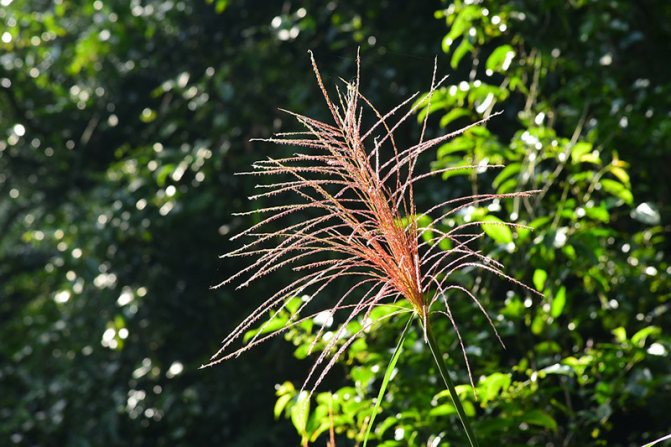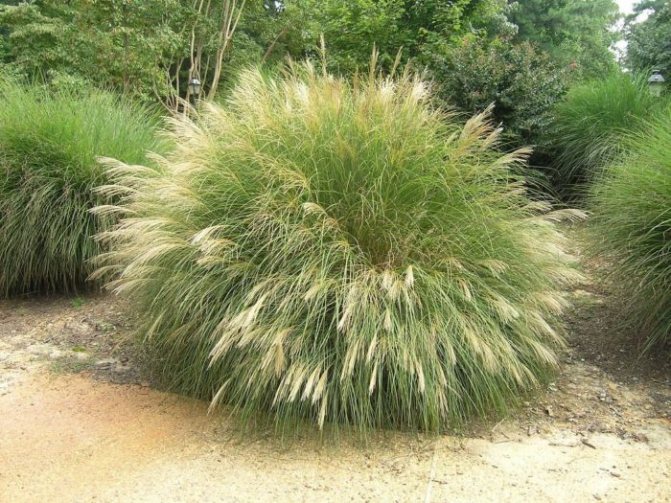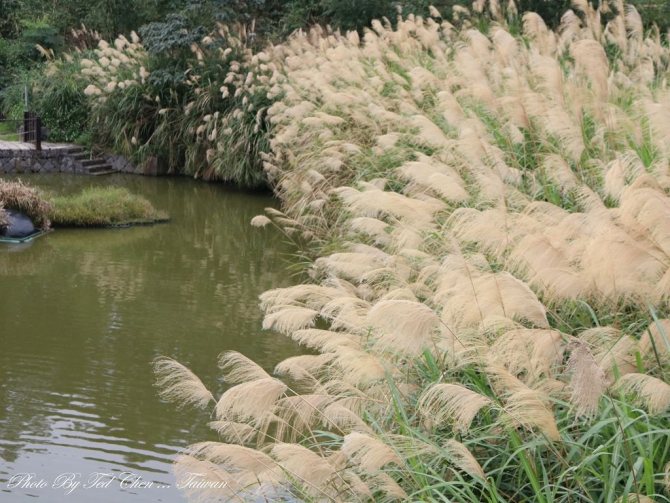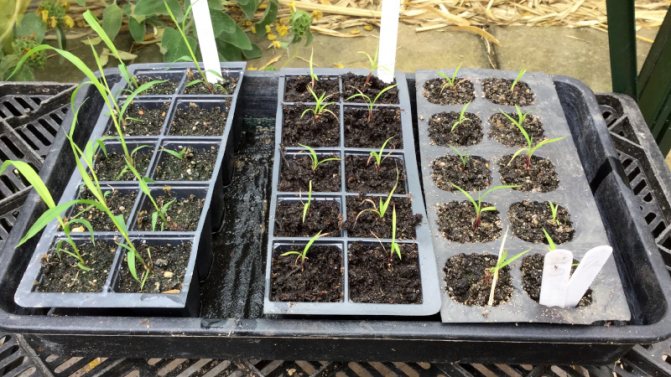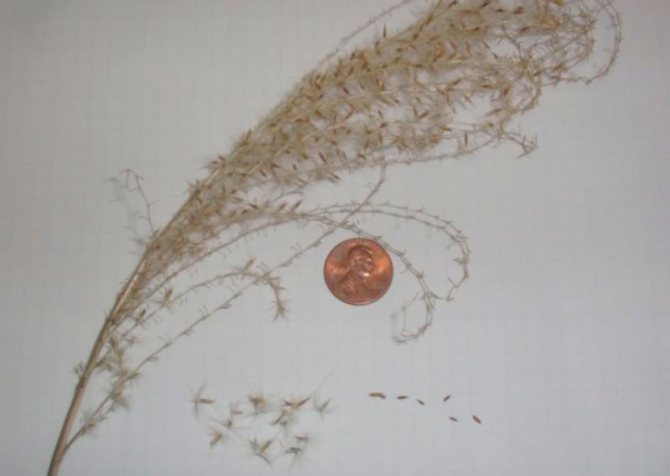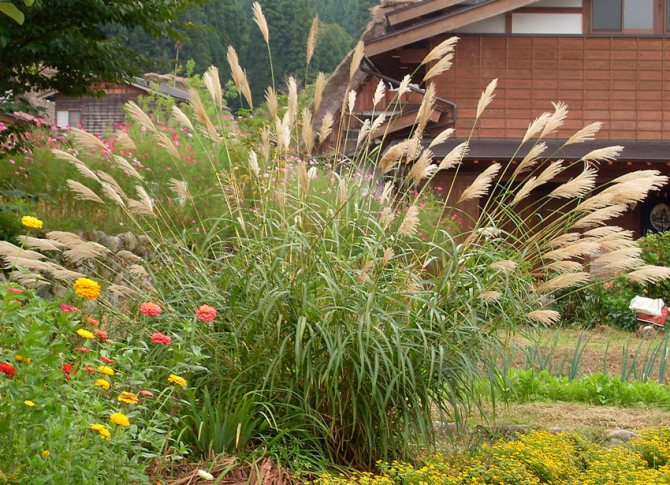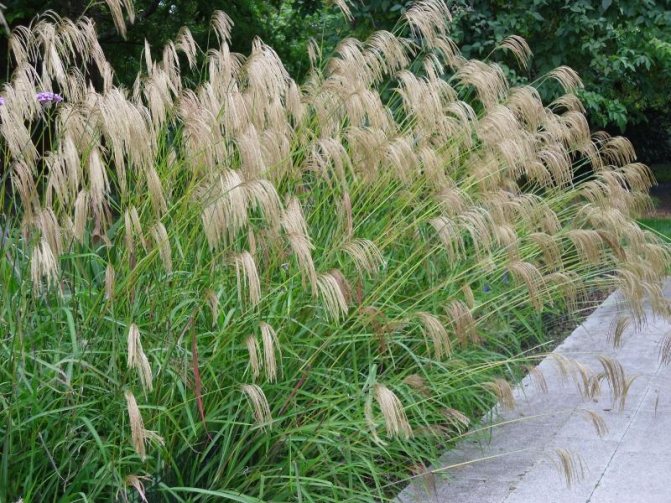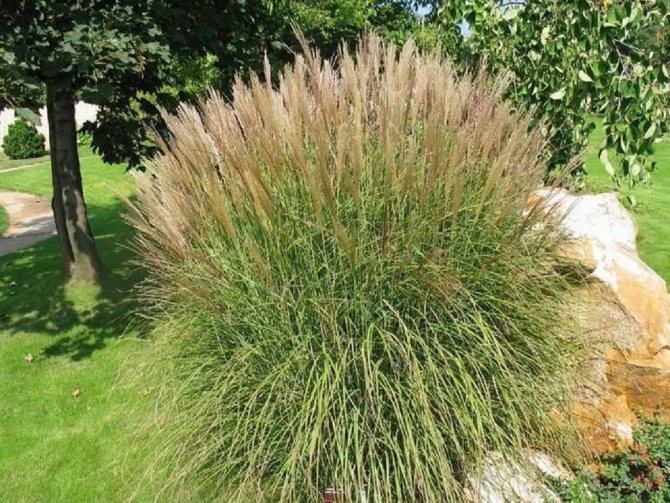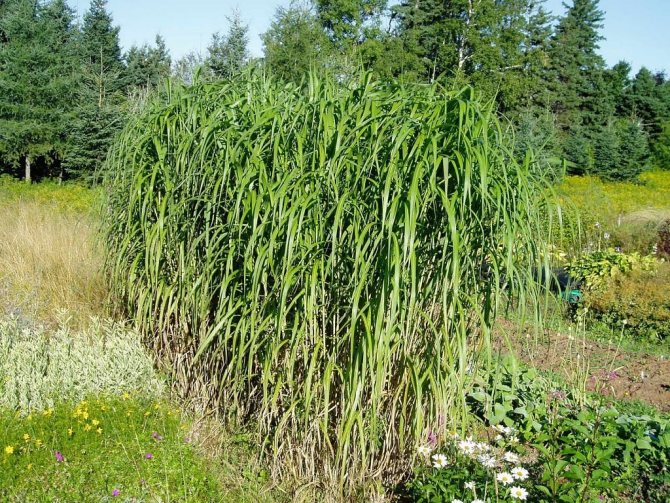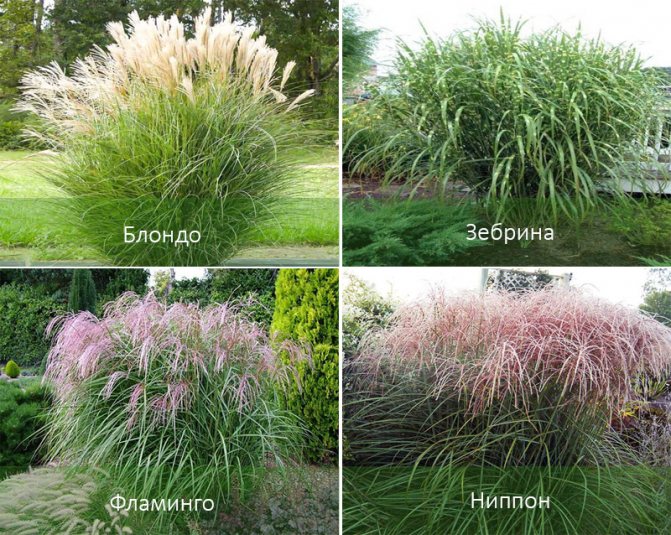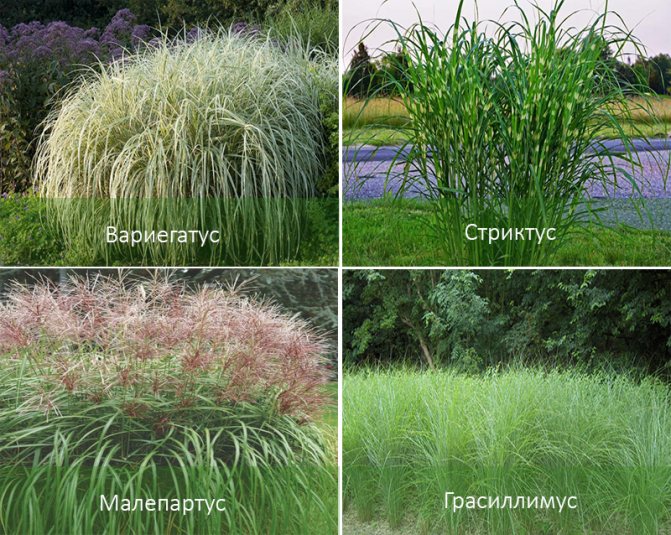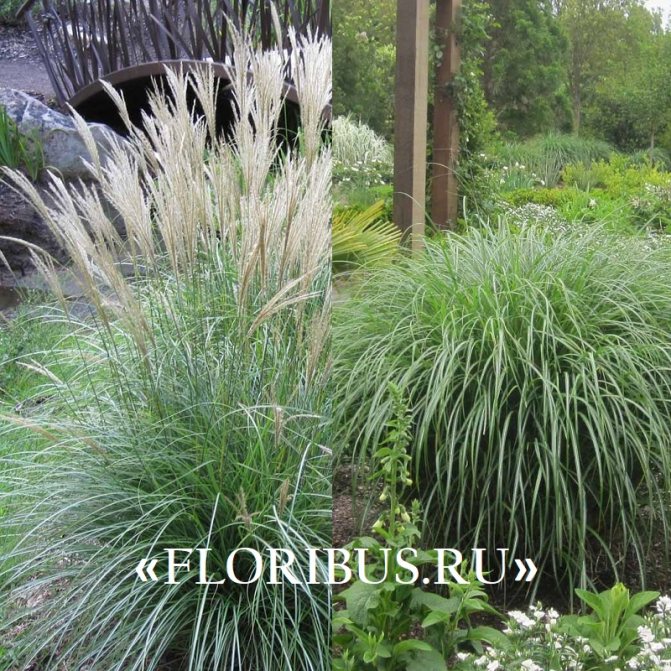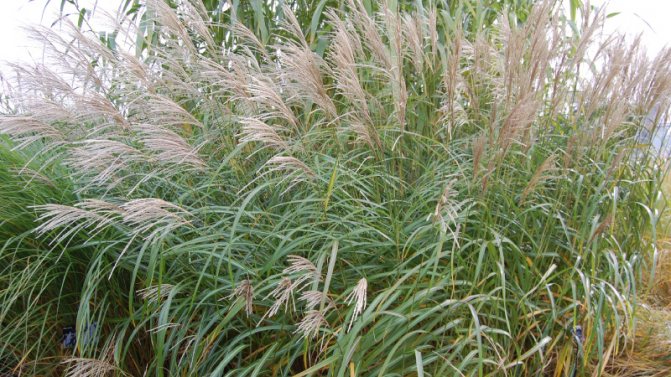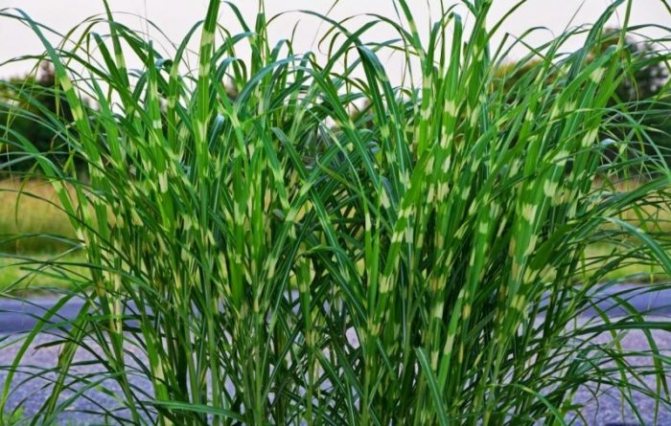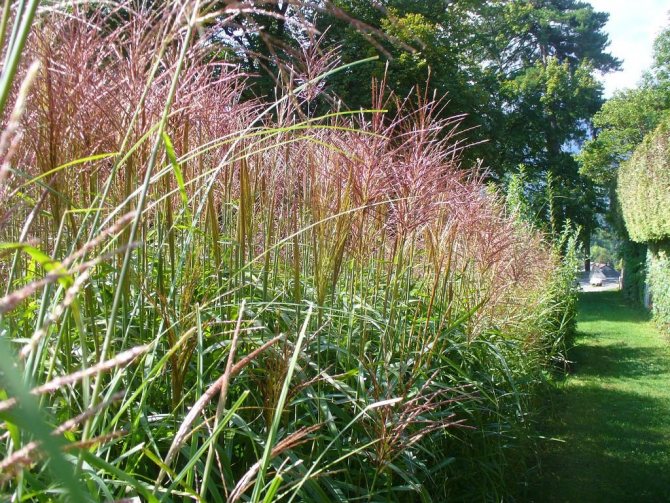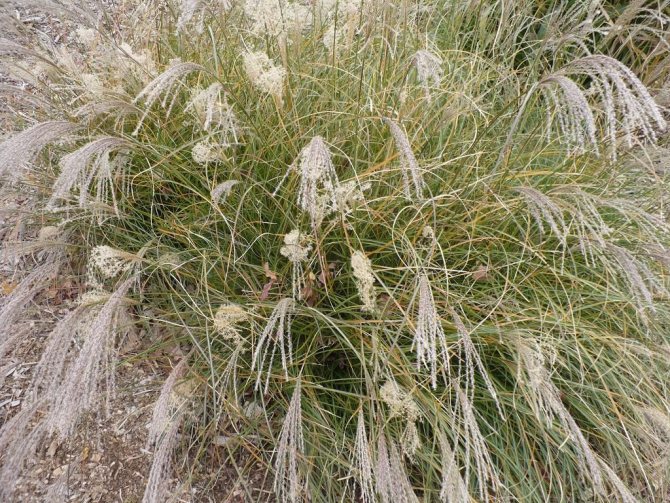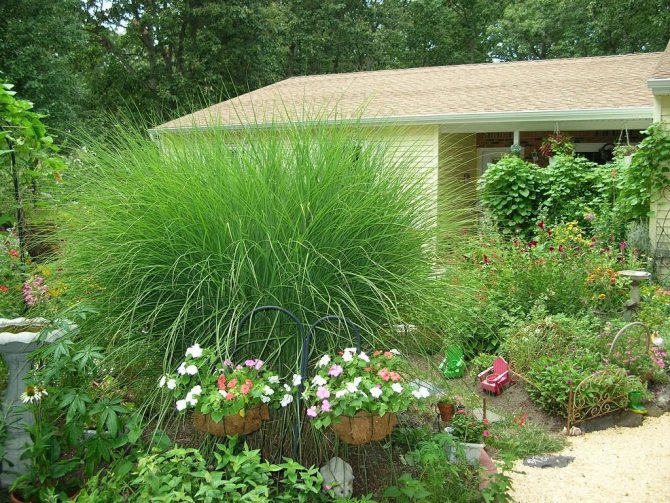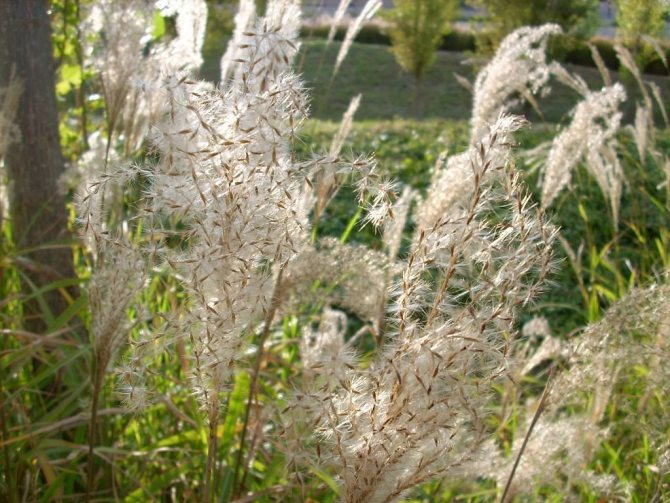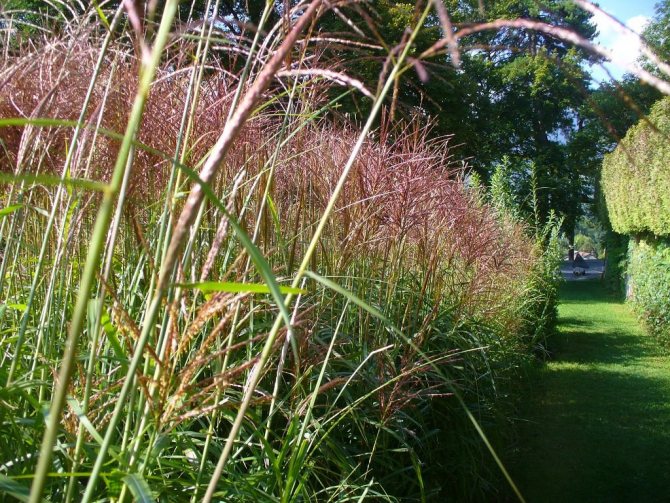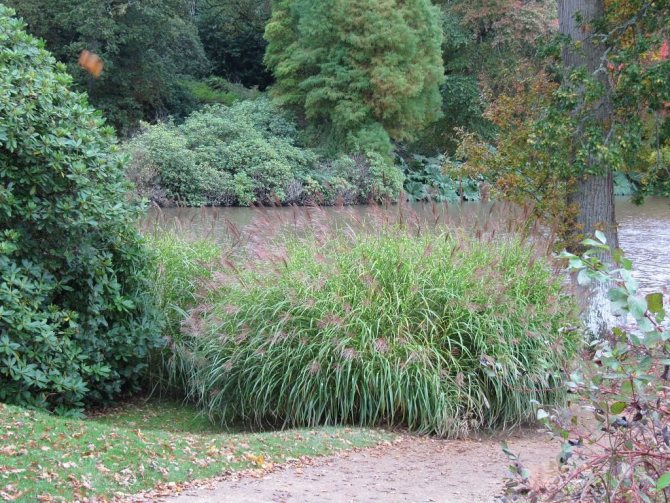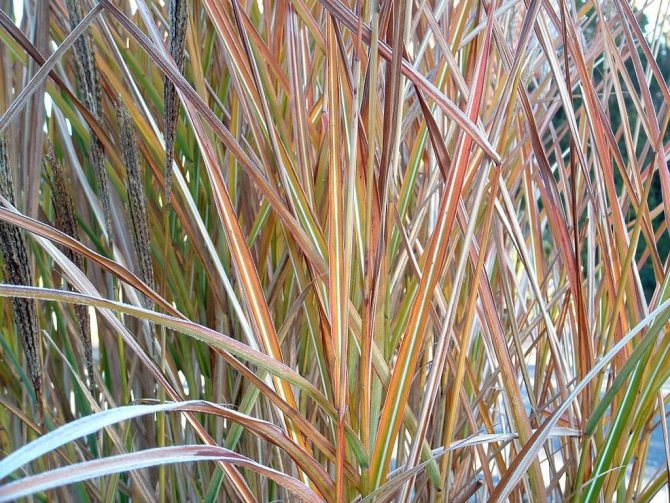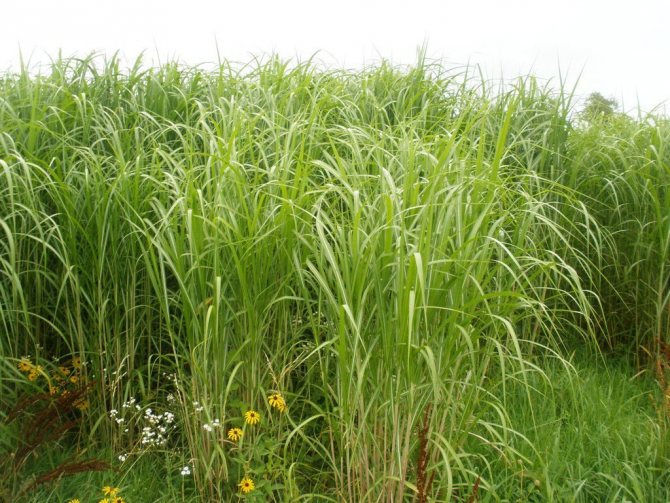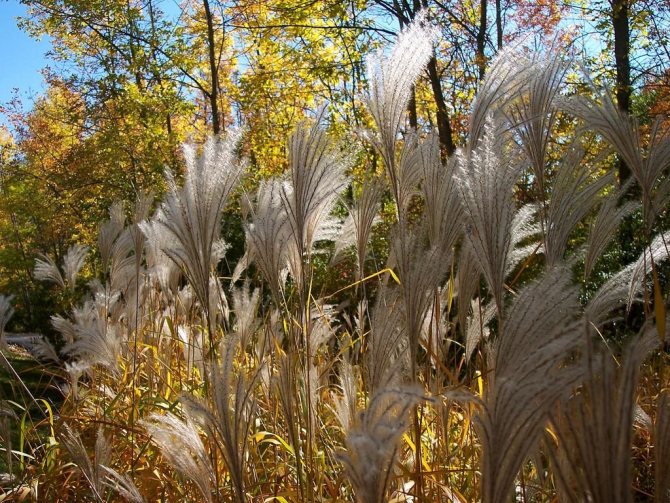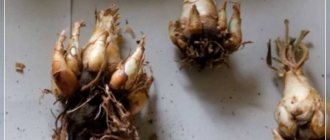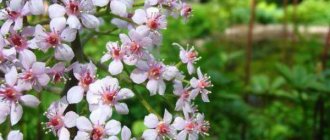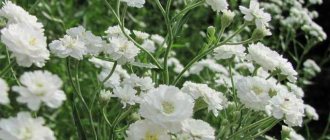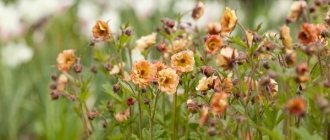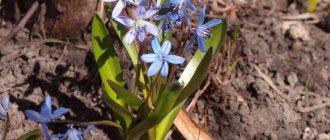Category: Garden Plants
Plant miscanthus (Latin Miscanthus), or fan, is a close relative of sugar cane and belongs to the genus of herbaceous perennials of the Bluegrass family (Cereals), common in the subtropical and tropical regions of Asia, Australia and Africa. There are about 40 plant species in the genus. In culture, miscanthus grass is one of the most popular ornamental grains. Miscanthus in landscape design is used to decorate ponds, lawns, as well as to create dry floristic compositions.
Planting and caring for miscanthus
- Landing: from late March to mid-May.
- Bloom: in the second half of summer.
- Lighting: bright sunlight.
- The soil: wet, fertile, near the reservoir. Miscanthus grows poorly on heavy clay and sand.
- Watering: regularly and abundantly, you can use a hose.
- Top dressing: regular and moderate, three times per season, starting from the second year: in mid-May - with urea solution, in the first half of summer - with humates, in the second - with potassium-phosphorus fertilizers.
- Reproduction: seeds, but more often by dividing the bush in the spring.
- Pests and diseases: the plant is extremely resistant to both diseases and pests.
Read more about growing miscanthus below.
Second varietal group
The second popular cultivar group includes miscanthus of medium height up to 1.5 meters. Very similar to the "Grosse Fontane" is a species called "Klein Fonfane". The only difference is that it is smaller.
Very difficult to grow spectacular "Ferner Oster" - a plant of medium size, withstands a maximum drop in soil and air temperature to -24 degrees. Therefore, it is suitable for cultivation in climatic zone 5.
Flamingo cultivar - miscanthus up to 2 meters high. During the flowering period, beautiful ears of pink flowers are formed on long stems. Flowering later - begins in late summer, around mid-August.
Morning Light is a perennial with narrow, very thin foliage. The plant is formed as a neat rounded bush. There is a thin white border along the outline of the leaf. The flowers are collected in large brushes of a reddish hue. They are located at the tops of long flowering stems, up to 1.5 meters high.
Look at the varieties of Chinese miscanthus in numerous photos illustrating the external attractiveness of the herb:
Miscanthus flower - description
Miscanthus flower is a perennial from 80 cm to 2 m in height with creeping rhizomes, which in search of food can reach a depth of 6 m, erect shoots, scaly leathery leaves 5 to 18 mm wide and fan-shaped panicles 10 to 30 cm long, consisting of spikelets ... Miscanthus is unpretentious, hardy and environmentally friendly, it is of interest not only for its decorative effect, but also as a fuel for power plants, since during its combustion a large amount of energy is released while forming a minimum amount of ash due to the low moisture content of the raw material.

Varieties for cultivation in different regions
All varieties of Miscanthus Chinese are divided into several groups. The first is very popular - tall perennials. They reach a height of 2-3 meters.
The most popular variety is the Siberfeder, a large plant with a spectacular appearance. This variety is suitable for growing in different regions, where the air temperature in the coldest season drops to -29 ... 34 degrees (climatic zone 4). The leaf plates are dark green, up to 2 cm wide. They form a large, slightly collapsed hummock. This happens even if the perennial has enough lighting. Flowering begins in August, at this time the Chinese Miscancus throws out a long peduncle up to 2 meters high. On it are inflorescences that look like feathers of a pleasant pink hue.
Sort "Goliant" - a tall plant up to 2.7-3 meters. Green leaf plates. The plant is characterized by long late flowering, which begins in mid-August. On the stems, the apical ears of the inflorescences are pink; by the end of autumn they become silvery.
"Grosse Fontane" is a beautiful variety of Chinese miscanthus, up to 2.4-2.5 meters high. The leaf plates are plain green, linear. The variety blooms early - in the middle of summer.
"Rotfuchs" is a stunning original variety, forms straight, neat shrubs of high growth. The width of the curtains is up to 110 cm. The leaves are very narrow, no more than 2 cm wide. In autumn, the perennial is painted in dark red and burgundy shades. Before wilting, the ears of the flowers become coal-purple, then silvery.
Chinese miscanthus "Zebrinus" is a beautiful plant, up to 2.5 meters high during the flowering period. The leaves are long, green with clear yellow stripes. Flowers appear in early September, the variety differs from others in that the tops of the inflorescences have a silvery tint. The bush is tall, up to 1 meter wide.
Planting miscanthus
When to plant miscanthus
Planting miscanthus is carried out in the spring, when the soil warms up - from late March to mid-May. Miscanthuses are thermophilic, so they should be planted in well-lit and sun-warmed areas, protected from the cold wind. But even more than warmth, Miscanthuses love water, which is why they prefer moist, fertile coastal areas. The quality of the soil for miscanthus is not very important, but they grow worst of all on sands and heavy clays.
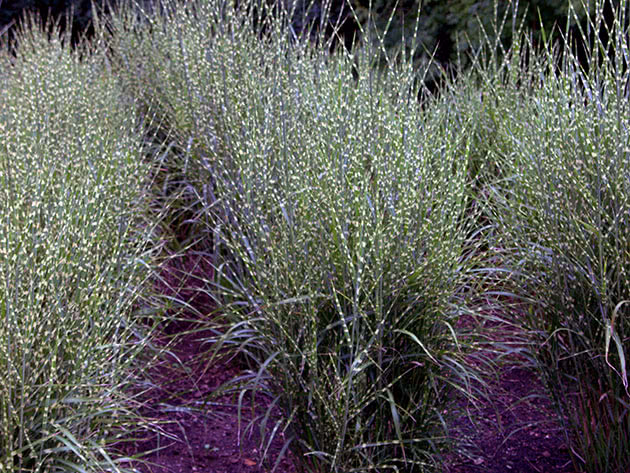

How to plant miscanthus
If you decide to grow miscanthus on the plot, buy adult seedlings: this plant has a very long growing season, since the thermophilic miscanthus starts growing only when the air temperature reaches 25 ºC, so the young seedling simply will not have time to settle down and get stronger before the onset of cold weather.
- Buttercup: planting, care, growing from seeds
An adult seedling has a greater margin of safety, and with good shelter it can painlessly survive even a cold winter. A layer of fertile soil is placed in the planting hole, which should be slightly larger in volume than the root system of the seedling, then the seedling is lowered into it and the voids are filled with earth, gradually tamping it. After planting, miscanthus is watered abundantly.


Growing miscanthus from seeds
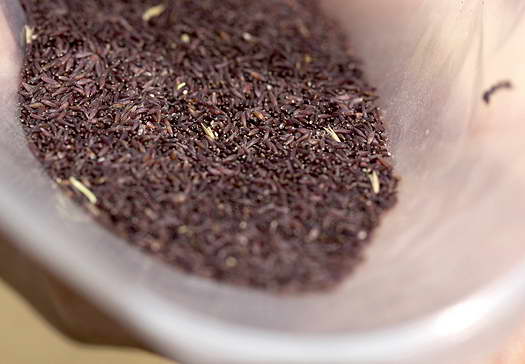

Miscanthus seeds photo
Sowing miscanthus for seedlings should be started in the fall. The seeds do not need pretreatment.
- Place 1-2 seeds in individual containers (peat pots or plastic cups), lightly press them into the soil.
- Moisten crops, maintain optimum soil moisture, and provide diffused lighting.
- To accelerate the germination of seeds, the crops can be covered with cling film or a plastic bag.
- When shoots appear, the film is removed.
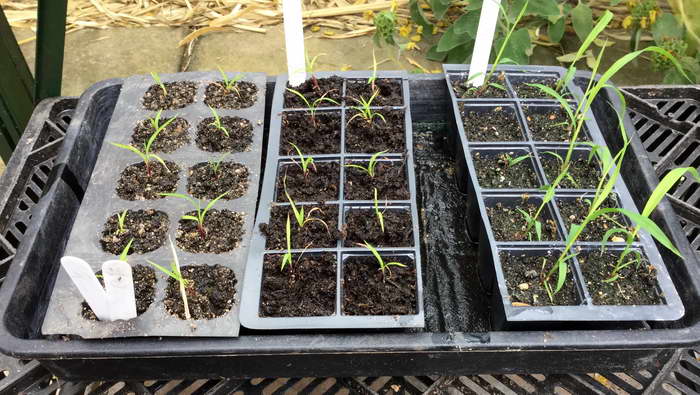

Miscanthus growing from seeds photo seedlings
- To prevent the seedlings from stretching, especially in the first 2 weeks, it is advisable to provide an air temperature of 18-20 ° C; on short days of light, it is imperative to supplement it with phytolamps.
- Grow seedlings until spring, providing moderate watering and diffused bright lighting.
- Planting in open ground should be carried out with the establishment of real heat without night frosts, this is approximately mid-late May.
- Before planting in the ground, accustom the seedlings to sunlight and wind, taking them outside in a place protected from drafts. First, they take them out for a couple of hours, each day increasing the duration of their stay on the street. At the end, the seedlings should spend the night outside.
Hardened seedlings will easily transfer the transplant into the ground and immediately grow. Try to plant without disturbing the earthen lump. And so that the pots can be easily removed from the roots, you need to moderately water the plants a day before planting and let the earth damp.
Caring for miscanthus in the garden
How to care for miscanthus
Plant lovers argue that there is no worse spectacle than drying up miscanthus, so do not forget to water it, especially during hot dry seasons. It is best to use a hose to water the miscanthus - the more abundant, the better. The cultivation of miscanthus also involves regular but moderate feeding, since an excess of nitrogen, for example, leads to lodging of the plant.
In the first year, miscanthus is not fed, and in the future, fertilizers are applied twice a season: in mid-May, liquid fertilizing with nitrogen fertilizers is required - for example, a urea solution. In the first half of summer, the site is watered with humates, and in the second, potash-phosphorus fertilizers are applied. When starting to grow miscanthus, tune in to constant weed control, at least in the first two years of the plant's life. Then, when it gets stronger and grows, the weeds will no longer break through the intensively spreading roots of miscanthus. But, thanks to the roots of the plant, you do not have to loosen the soil on the site.
By the way, the growth of miscanthus in the garden will have to be limited, otherwise you, besides this picturesque reed, will not be able to grow anything else. This is done immediately after planting: the limits in which the plant should remain are outlined with a limiter. You can use pieces of iron or slate as a limiter. They need to be dug in along the entire perimeter of the site, without gaps and gaps, to a depth of at least 20 cm, and they should rise above the surface by at least 10 cm so that the roots in search of food could not "jump" the line.
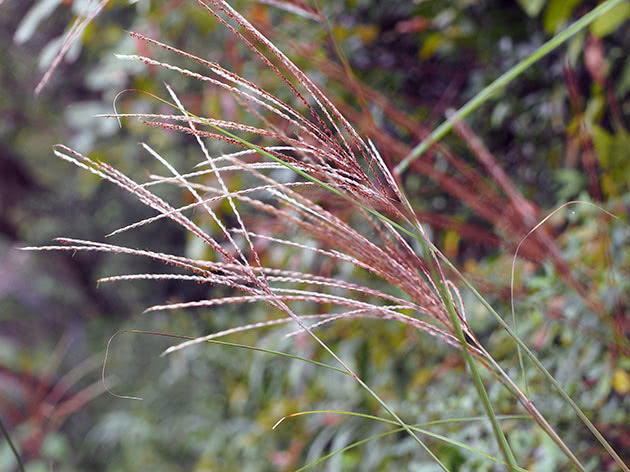

By the end of summer, some species of miscanthus lose their lower leaves, and this reduces the decorative effect of the plant. To disguise the lower thinning part of the bushes, it is best to plant a high hostu on the site - 50-60 cm in height, quietly growing in conditions of excessive soil moisture, without which miscanthus cannot do.
That is, perhaps, all that can be said about the cultivation of this cereal. Planting and caring for miscanthus in the open field is not laborious, and the beauty and effectiveness of this plant can hardly be overestimated.
- Buttercup: planting, care, growing from seeds
Reproduction of miscanthus
Miscanthus does not like changing places, however, over time, the shoots in the center of the bush die off, so it becomes necessary to transplant a plant, which is combined with dividing the bush - one of the most reliable vegetative ways of propagating miscanthus. The bush is divided in spring or early summer, the procedure is carried out very carefully, since miscanthus recovers after injuries for a long time and painfully.
Plant propagation by seed is also possible. Miscanthus seeds do not need pre-sowing treatment, however, the generative method of reproduction will require patience and will take a lot of time, since a plant grown from seeds acquires attractiveness only in the third or fourth year. Seeds are germinated in peat pots, and with the onset of spring, after the soil has completely thawed, they are planted in open ground.We remind you that miscanthus does not retain varietal characteristics during seed propagation, therefore the overwhelming majority of gardeners prefer to propagate miscanthus vegetatively.
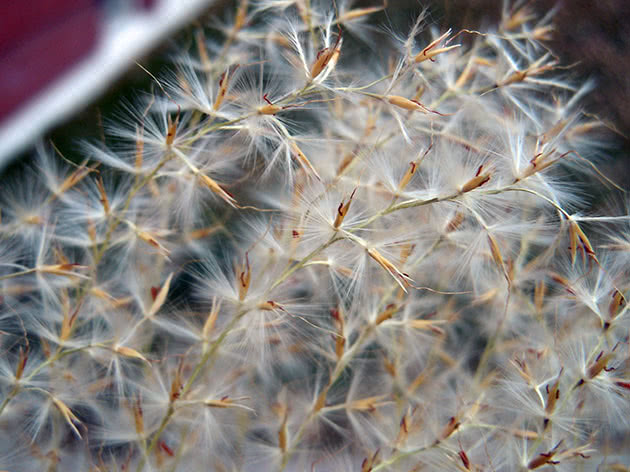

Miscanthus pests and diseases
About diseases and pests that can infect miscanthus, nothing is known. It is a very healthy plant.
Diseases and pests
Chinese miscanthus is not attacked by harmful insects, therefore, it does not need additional chemical treatment. With prolonged rains, for preventive purposes, the plant is sometimes treated with fungicides.
Veernik is distinguished by its resistance to diseases, for which it is very appreciated by gardeners. For the healthy development of the bush, it is necessary to choose the right top dressing. Nitrogen-containing fertilizers are not suitable for the fan; they can spoil the culture from them. For feeding, it is better to use urea, sodium and potassium salts of humic acids.
Miscanthus is widely used in landscape design. Most often it is found in the design of borders and reservoirs. The bush can serve as both a separate background addition and the center of the composition. With proper planting and care, it paints the garden and will delight you with its beautiful view from early spring to late autumn.
Miscanthus after flowering
Preparing miscanthus for winter
There are types of miscanthus that are resistant to cold weather, and there are those that need mandatory shelter for the winter. Delicate varieties must be protected not only from frost, but also from sudden temperature changes. If the cold snap sets in gradually, then the plant has time to adapt to changes in nature, but if frosts broke out unexpectedly, it may die. To prevent this from happening, cover the miscanthus with a film hut so that air can flow under it from the sides, and on top of the film, also with a hut, install two wooden shields - this structure will protect the miscanthus from a sudden cold snap.
But do not forget to mulch the site before building the shelter and protect the roots from freezing with a thick layer of any loose soil.
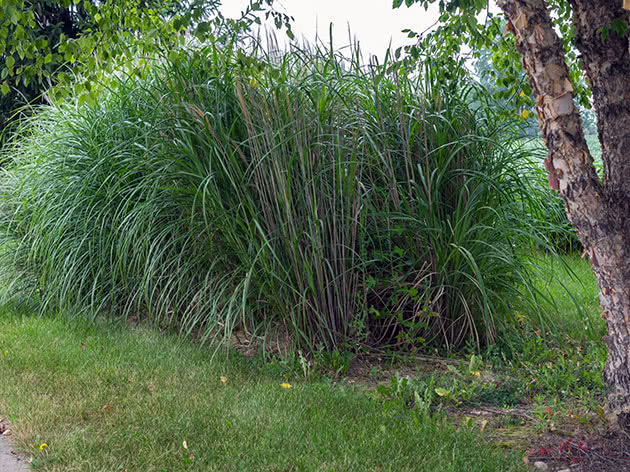

Plant propagation
Miscanthus is propagated by dividing the bush, which is the most favorable way. The plant itself prefers to grow in one place, but after some time, it begins to rot by itself, and it needs to be planted, propagated by the miscanthus by dividing the bush, which is produced in the spring, or at the beginning of summer. The separation procedure should be very careful, because the plant recovers for a long time if damaged.
Seeds are another way of reproduction. Through this method of propagation, you get a not quite finished plant, in comparison with what grows from a piece of the main bush when it is divided. Miscanthus, when planted with seeds, does not receive its decorative properties soon, after three years, or even after four, it takes the form of a normal and regular plant. The seeds should be germinated in peat pots before spring arrives. As soon as the snow melts and the soil thaws completely, they need to be planted in the ground. If you plant miscanthus with seeds, then the decorative properties are not preserved, as a result of which, almost everyone chooses the vegetative propagation path of the plant.
All known pests and diseases cannot harm the plant, miscanthus grows healthy and is not attacked by any diseases or parasites. This aspect only gives positive characteristics to an already beautiful ornamental plant.


Types and varieties of miscanthus
Giant miscanthus (Miscanthus giganteus)
Most likely, it is a complex hybrid that has long been familiar to gardeners, but the origin of which can only be guessed at. Its erect stems reach a height of 3 m, weeping dark green leaves with a white stripe along the midrib, leaves up to 25 cm wide, extending from the stem in all directions, make the plant look like a large fountain.This species blooms in late summer with pinkish panicles, which eventually become silvery, and in areas with cold summers, the giant miscanthus may not bloom at all.
Most often, this view is used as an accent in the background. It requires masking the lower part of the stems due to the leaves dying off in the second half of summer.
- Buttercup: planting, care, growing from seeds


Chinese Miscanthus (Miscanthus sinensis)
It grows naturally in China, Korea, Japan and Russia. It is a perennial grass with a loose bush, short rhizome and erect stems up to 3 m high. Its leaves are linear, hard and rough, up to 1.5 cm wide, with a rough rib along the median vein. It blooms with single-flowered spikelets up to 7 mm long, collected in loose panicles. In culture, the species has been since 1875, its winter hardiness is relative, therefore, dry shelter and mulching for the winter are required.
Chinese miscanthus is the most popular species in culture; today more than a hundred of its varieties are known, which differ in color and shape of inflorescences, sizes and outlines of the bush. Among them there are both thermophilic plants and those that are safely grown in the middle lane. For example:
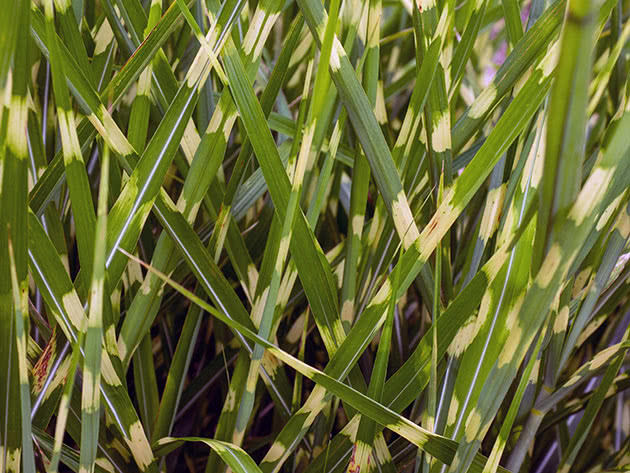

- Blondeau - bush height up to 2 m, cold-resistant - hibernates without shelter;
- Variegatus - a loose bush no more than one and a half meters high with white longitudinal stripes on the leaves;
- Miscanthus Zebrinus, sometimes they call him Miscanthus Zebrina - variegated plant with transverse yellow stripes over green leaves;
- Ferner Austin - up to one and a half meters high, on narrow graceful green leaves, a white stripe along the midrib, in autumn changing color to reddish-red. Fan-shaped, bright red panicles with white tops that bloom in August gradually become silvery-bronze;
- Morning light - a graceful low plant with narrow leaves with a white edging. Unfortunately, this variety blooms late and not every year;
- Strictus - Miscanthus up to 270 cm high with bright variegated leaves up to 1.5 cm wide, along which transverse bright white and green stripes alternate, and reddish single-flowered spikelets in loose panicles.
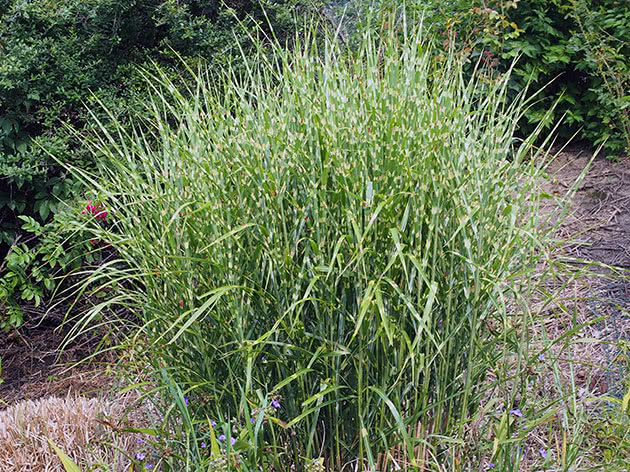

Propagation of miscanthus by dividing the bush


Reproduction of miscanthus by division
Over time, fanny bushes lose their decorative effect: the central shoots dry out, it becomes necessary to transplant and divide an adult bush for reproduction. This is the best option for a gardener: the plant will quickly create the expected decorative effect, it will be easier to cope with wintering.
The procedure is carried out in the spring. Miscanthus painfully tolerates such an intervention, therefore accuracy is the key to successful division and subsequent adaptation. The bush is dug in, removed from the ground, cut into several parts with a sharp tool. Each delenka has roots and shoots. The cuts are treated with coal, the resulting bushes are planted.
After dividing, the onset of vegetation of miscanthus may be delayed or slower than usual. The plant is given time to adapt, after which the cereal is restored.
Use in landscape design
Wanting to transform their site, many gardeners prefer to plant unusual plants on it. For a variety of flora, it is useful to get acquainted with a plant such as miscanthus. Its long, narrow stems look perfect by the pond. Do not exclude the use of tall bushes as a hedge.
Another use of the fan is as a backdrop for flowering plants in the garden. The cereal goes well with loosestrife, sage, and yarrow. Along the reservoir, the plant is planted with a loosestrife, a cuff and a ligularia. Tall varieties look great with hydrangea, mock orange, lilac bushes.
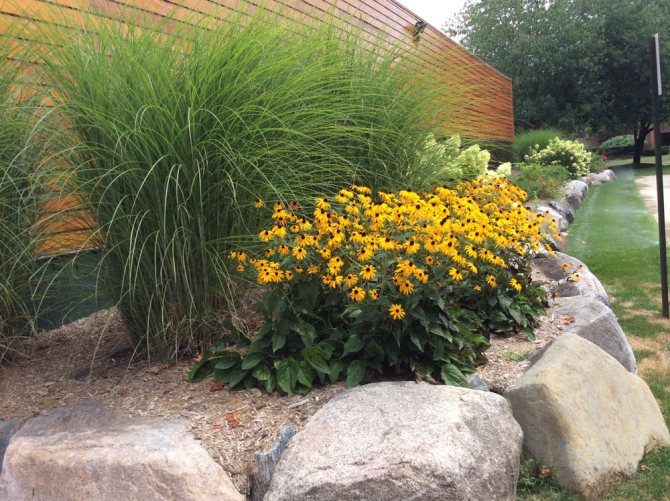

Background application of miscanthus for bright rudbeckia
Miscanthus is an unpretentious plant. Any novice gardener without agrotechnical knowledge can cope with its planting and subsequent care.


